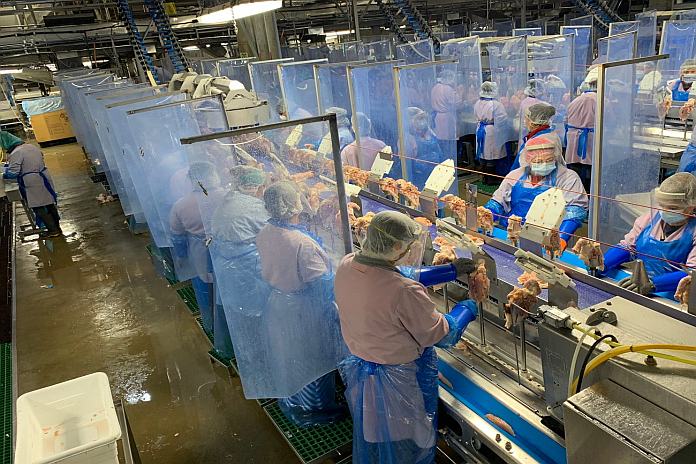Dear Sir
After I was discharged from the Navy and finished graduate school in the late 1960s, I started my corporate career as a manufacturing analyst/industrial engineer for a large food company that processed meat and poultry, and I know how close the workers are on the manufacturing lines. So, it is no surprise to me these workers are contracting and spreading the coronavirus within their plants.
The plant has to undergo a complete cleaning with a disinfectant prior to reopening. The plant owners have to purchase and provide face masks, possibly goggles, medical aprons, and other Personal Protective Equipment (PPE) to the workers to help them combat the virus.
Additionally, the workers at the processing tables where the meat and poultry are placed have to be spaced out about six feet apart. The same spacing applies to the conveyors used to transport the beef, pork, and poultry to be processed. The quantities of beef, pork, and poultry on the tables will have to be reduced and the conveyors will have to be slowed down so the reduced number of workers can keep up with the flow. Of course, this will reduce the throughput of the processing plants and limit the volume of product available to the marketplace, but it would allow food processing plants to operate while safeguarding the health of the workers.
Since the number of workers on any one shift will be reduced, it could be feasible to put on a second shift to help make up for the lost volume. A third shift might not be feasible because of machine maintenance, sanitation, and cleaning requirements. A shortened third shift might be possible. The economics of adding shifts will have to be looked at by ownership because of additional costs for shift differential pay, increased supervisory hours, and increased overhead costs, e.g. utility costs. If additional shifts are not feasible during the normal workweek, it might be feasible to put on weekend shifts.
I forward this information to wet people’s appetite with food for thought.
Donald Moskowitz
Londonderry NH





